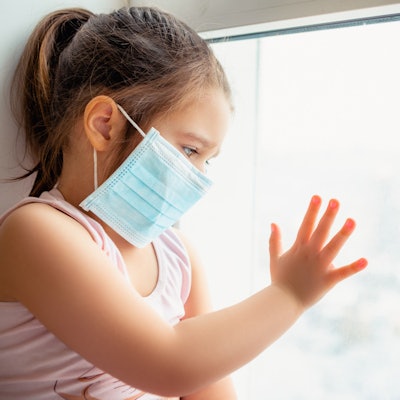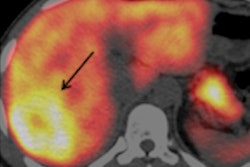
The French radiology society (Société Française de Radiologie, SFR) has published a series of recommendations for pediatric thoracic imaging in response to the COVID-19 pandemic, based in part on studies in the literature.
Systematic radiological screening of asymptomatic children is not justified, the society stressed. In the case of symptoms evocative of COVID-19 or where there are suspicions of contagion, but with no serious clinical signs, thoracic imaging is not indicated. Where evocative symptoms or suspicion are absent, chest x-ray retains its usual indications (unexplained fever or auscultatory abnormality).
The SFR noted that for COVID-19 pediatric cases (proven or suspected), CT is justified for the following:
- Initial diagnosis of serious cases: in those for whom hospitalization is envisaged (children requiring oxygen)
- During the follow-up of serious conditions: in cases where there is clinical deterioration
- In specific cases: in children who need emergency medical care or surgery
When a diagnostic polymerase chain reaction (PCR) test can't be performed in a timely manner, the use of low-dose pulmonary CT to diagnose COVID-19-related pulmonary involvement is at the discretion of the medical team treating the patient. CT should only be undertaken if radiological findings have a direct and significant impact on patient therapy and are in the patient's interests or in the interests of the staff in direct contact with the patient. Parents should be informed of these specific indications.
The SFR also recommends that intravenous administration of iodinated contrast can contribute to the differential diagnosis initially and identify possible thromboembolic complications in secondary deterioration. Acquisition parameters should be optimized while factoring in diagnostic reference levels. Meanwhile, hygiene precautions by technicians in direct contact with patients are the same as those for adults, with the same procedures for equipment cleaning.
In terms of radiological semiology, adult semiology is described in the SFR e-bulletin and guidelines from the European Society of Radiology (ESR) and the European Society of Thoracic Imaging (ESTI). Pediatric semiology is not as well described, with initial publications depicting similar but less-severe semiology. There are areas of subpleural, unilateral, or bilateral ground-glass opacification and in half of cases, zones of consolidation with halo sign. This semiology can be modified with a coinfection.
Justification and optimization of pediatric imaging that uses ionizing radiation must be systematically and vigilantly monitored: Any such acts must be medically justified and each request validated by a senior radiologist, according to the SFR. Radiologists and technicians must ensure optimized dose during exams.
The SFR emphasized these clinical and epidemiological points:
- 90% of infected children are asymptomatic or slightly symptomatic. Severe forms are exceptional.
- Clinical presentation is not specific except in cases of ageusia and/or complete anosmia (in the absence of rhinorrhea and nasal obstruction).
- Symptoms described are rhinorrhea, nasal obstruction, cough, fever, tachypnea, dyspnea, digestive symptoms (dysphagia, diarrhea), conjunctivitis, and rash.
- In newborns and infants younger than 3 months, the infection can present as an isolated fever, without respiratory signs in children who are irritable, whiny, or hypotonic. Complementary information can be found on Infovac-France.
In a separate move, the SFR has published recommendations by the French gastroenterology society (Société Française de Gastro-Entérologie, SFNGE) for digestive cancer patients during the pandemic. These recommendations state the following: "Whenever possible (for lesions < 3 cm) particularly for hepatocellular carcinoma and hepatic metastases, percutaneous tumor destruction is to be preferred (As this does not require ICU resources or ongoing care. Hospitalization is ambulatory up to 48 hours). (Expert opinion)."



















